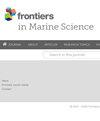中国海域重建海平面数据集的综合比较分析:验潮仪和卫星测高的启示
IF 2.8
2区 生物学
Q1 MARINE & FRESHWATER BIOLOGY
引用次数: 0
摘要
目前,全球范围内有许多重建数据集。为了检验这些数据集在中国海域的适用性,本研究全面分析了重建海平面数据集在捕捉中国海域海平面细微时间变化规律方面的可靠性和准确性。该研究采用了时间序列、泰勒图、相关系数、增长率和标准偏差等分析方法或指标。在与近岸实测数据的相关性方面,海洋数据同化(ODA)优于潮位仪重建(TGR),而潮位仪重建在捕捉海洋海平面变化方面表现出更强的能力。虽然 ODA 和 TGR 都存在低估中国及邻近海域海平面变化的问题,但 TGR 的表现优于前者。ODAs 在反映海平面上升速率方面表现出不一致性,但它们,特别是中国海洋再分析(CORA),与卫星测高数据集的相关性较好。同时,它们都能很好地反映太平洋十年涛动(PDO)。依靠海洋验潮站的 TGRs 由于覆盖范围有限,与验潮站的相关性较差。重建差异可归因于方法差异和数据同化技术。未来的研究应探索海面温度等替代变量,以加强海平面重建,特别是在验潮站覆盖稀少的地区。本文章由计算机程序翻译,如有差异,请以英文原文为准。
Comprehensive comparative analysis of reconstructed sea level datasets in the China Seas: insights from tide gauge and satellite altimetry
At present, there are many reconstructed datasets at the global scale. To test the applicability of these datasets in the China seas, the study comprehensively analyzes the reliability and accuracy of reconstructed sea level datasets in capturing nuanced temporal patterns of sea level changes in the China Seas. This study applied analysis methods or indicators such as time series, Taylor plots, correlation coefficients, growth rates, and standard deviations. Ocean Data Assimilations (ODAs) outperform Tide Gauge Reconstructions (TGRs) in terms of correlation with measured data in the nearshore, while TGRs exhibit superior capability in capturing oceanic sea level variability. Although the ODAs and TGRs both suffer from the underestimation of sea level variability in China as well as in neighboring seas, the TGRs perform better than the former. ODAs show inconsistency in reflecting the rate of sea level rise, but they, particularly the China Ocean Reanalysis (CORA), demonstrate a better correlation with satellite altimetry datasets. Meanwhile, both of them can reflect the Pacific Decadal Oscillation (PDO) well. TGRs, relying on oceanic tide gauge stations, suffer from poor correlation with tide gauge stations due to limited coverage. Reconstruction discrepancies are attributed to methodological differences and data assimilation techniques. Future studies should explore alternative variables like sea surface temperature and so on to enhance sea-level reconstruction, especially in regions with sparse tide gauge coverage.
求助全文
通过发布文献求助,成功后即可免费获取论文全文。
去求助
来源期刊

Frontiers in Marine Science
Agricultural and Biological Sciences-Aquatic Science
CiteScore
5.10
自引率
16.20%
发文量
2443
审稿时长
14 weeks
期刊介绍:
Frontiers in Marine Science publishes rigorously peer-reviewed research that advances our understanding of all aspects of the environment, biology, ecosystem functioning and human interactions with the oceans. Field Chief Editor Carlos M. Duarte at King Abdullah University of Science and Technology Thuwal is supported by an outstanding Editorial Board of international researchers. This multidisciplinary open-access journal is at the forefront of disseminating and communicating scientific knowledge and impactful discoveries to researchers, academics, policy makers and the public worldwide.
With the human population predicted to reach 9 billion people by 2050, it is clear that traditional land resources will not suffice to meet the demand for food or energy, required to support high-quality livelihoods. As a result, the oceans are emerging as a source of untapped assets, with new innovative industries, such as aquaculture, marine biotechnology, marine energy and deep-sea mining growing rapidly under a new era characterized by rapid growth of a blue, ocean-based economy. The sustainability of the blue economy is closely dependent on our knowledge about how to mitigate the impacts of the multiple pressures on the ocean ecosystem associated with the increased scale and diversification of industry operations in the ocean and global human pressures on the environment. Therefore, Frontiers in Marine Science particularly welcomes the communication of research outcomes addressing ocean-based solutions for the emerging challenges, including improved forecasting and observational capacities, understanding biodiversity and ecosystem problems, locally and globally, effective management strategies to maintain ocean health, and an improved capacity to sustainably derive resources from the oceans.
 求助内容:
求助内容: 应助结果提醒方式:
应助结果提醒方式:


